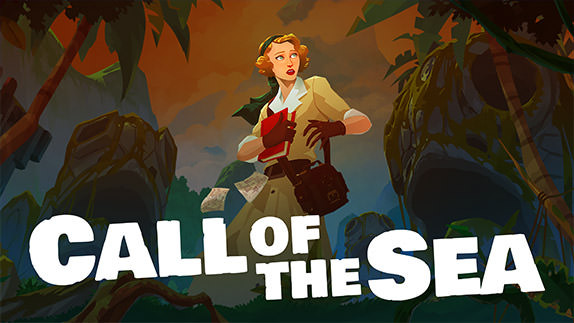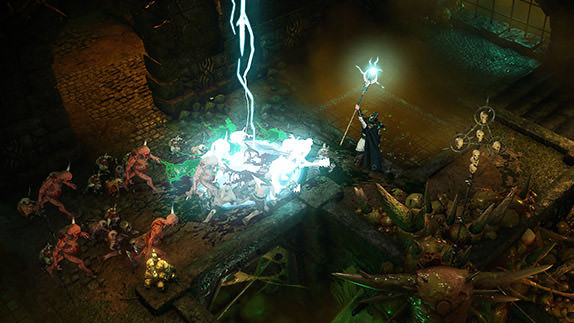Warhammer 40,000: Inquisitor - Martyr Review

 By Kevin Mitchell | September 4, 2018
By Kevin Mitchell | September 4, 2018
Whether you are a fan of the old-school fantasy version of Warhammer or the grim sci-fi epic 40K, you'll be hard-pressed to have not heard of the tabletop experience beloved by millions around the world. From turn-based strategy games to first-person shooters, the Warhammer franchise spans almost every conceivable genre—within reason. I don't think we'll see a Space Hulk dating simulator, but the sheer number of developers and publishers working on the series is staggering. The latest is an action-RPG developed by NeocoreGames, the same team behind the grossly underrated Van Helsing series.
Set in a gruesome and grim universe, Warhammer 40,000: Inquisitor - Martyr thrusts you into the role of an inquisitor—members responsible for dealing with heretics and investigating potential threats to humanity. The game has been available on Steam Early Access for a few years but has just recently been released on home consoles (PlayStation 4 and Xbox One). Although I found the game to be quite sharp visually and adored the atmospheric sensation that genuinely captured the 40K universe, the game isn't without technical hiccups. The frame rate frequently drops to an insanely low level when you slaughter hordes of unclean simultaneously or litter the screen with explosions. Not only that, but the dismemberment and environmental destruction in the PC version have been removed/diminished due to performance issues. Enemies may still explode and transform into pools of blood and gibs, but you won't see body parts flying around or environments getting destroyed in the process—outside of elements that can be targeted.
After creating your character, which provides options for your class and subclass, you are thrown directly into the narrative. The opening mission serves as the game's tutorial, getting you acclimated to the controls. If you opt to have a character for each included class, you'll be disappointed to learn that you can't skip the opening tutorial missions and must play through them each time. Also, for a game that touted its inclusion of online multiplayer, you can't play any story missions with others. The developers wanted to deliver a heavily story-driven experience, which is why the option isn't available. I don't think that was the right move—players should be able to choose to play alone or with others, even if it doesn't make sense narratively for multiple inquisitors to be present. Once you reach the game's hub area (taking about 45 minutes), you're free to continue the story, play 2-player local co-op, or play online with up to three others in procedurally generated missions. Locally, the second player only gets to utilize a premade temporary character that doesn't allow for progression or skill alterations. Investigations take place across multiple missions (called priority assignments), acting as mini-campaigns. Before they start, you select an action costing a set amount of currency, such as using a psyker to map a criminal network, which improves the possibility of success but could have ramifications on collateral damage. Hacking the records of the same station, on the other hand, has questionable improvements to your success but won't cause the possibility of collateral damage.
Each of the three subclasses for the three main classes has their own unique abilities, with the rest of your moveset being determined by your equipped weapon. My crusader, the tank class in the game, can use thrusters to pounce on enemies or use rockets to blanket an area with destruction. The remaining two classes, psyker and assassin, fill the typical role-playing game roles of ranged and rogue, although you certainly can use a wide selection of items. Even as a tank, I can freely use ranged weapons instead of close-range combat. My first selection was to use a psyker (aetherwalker) and overpower the unclean masses with my powers; however, I learned that overusing abilities actually risks demons (daemons) being summoned. After some research, this seems to fit with the lore established in the 40K universe. It's an interesting mechanic to prevent players from becoming overly powerful.
The game offers a handful of different control schemes, allowing you to focus on using either the face buttons or the shoulder buttons and triggers for your attacks. An interesting mechanic enables you to hide behind cover, popping out to take out foes with ranged attacks. It's not typically required and most often rather useless, but can give you a brief moment to use a heal or plan your next attack. Targeted enemies are highlighted in red; however, the targeting system needs to be revamped—and fast. Ideally, you'd target the closest enemy in the direction you're facing. In practice, if you hold the primary attack button, you'll run to their location, most often passing enemy after enemy to attack someone behind everyone else. Making matters worse, supply and medical crates act as a priority for targeting, which makes fighting in areas where they're located frustrating.
As an action-RPG, Martyr prioritizes gearing your character for any challenge and provides countless pieces of loot through drops and chests of various rarity earned after completing missions. Each piece of equipment you use has a set power that operates independently from the item's stats. This power level determines which missions you should accept and can complete without incident versus those that will provide an additional challenge, regardless of difficulty chosen (which operate similarly to Torment in Diablo). For example, if you only have a power level of 210 and try to play a mission that is over 300, you may suffer a 25% reduced damage output plus take an additional 40% damage from enemies. As previously mentioned, choosing gear and weapons just based on their power level doesn't necessarily mean they have the best stats. A rare or mastercrafted sword with a lower power level may have better stats and additional modifiers, whereas a common version of the same sword has a higher power level but lacks the stat bonuses.
To prevent constant power level fluctuation, Martyr doesn't allow access to your inventory when deployed on a mission. Regardless if you have a better item in your stash or if a champion dropped an epic new gun, you must wait until you return to the hub area (which you do after every mission). It certainly takes some getting used to, as it devalues the focus on loot during missions, even though it's an integral part of the experience. For this reason, I opted not to try many new weapon types during critical missions, as I didn't want to limit myself in case I didn't enjoy how they played. You can set two different loadouts that can be swapped on-the-fly, giving you access to various weapons, such as flamethrowers, laser guns, greatswords, chainswords, and more. I traditionally stuck with one loadout using a two-handed weapon and another with a one-handed weapon and shield. The shield's usefulness is minimal for defensive purposes as by default you have to use the blocking skill that lasts only a fraction of a second. I keep it equipped for its area-of-effect usefulness when being swarmed.
With a focus on online interactions—either in the social Cabal (clan) features, online co-op, or through player-vs-player training sessions—Warhammer 40,000: Inquisitor - Martyr is an always-online experience. This means if you lose connection to the servers or if your home network drops, you'll be booted to the main menu and unable to play the game. Joining a Cabal is highly recommended, as you'll gain passive bonuses, and completing Cabal missions increases your clan's rank and unlocks additional rewards. The system is truly designed for you to play with your clan or friends in mind, although overall clan sizes are somewhat limiting, with most only having 20 slots (size increases with rank). Matchmaking takes an unnecessarily long time, especially since there aren't any filtering options—you're thrown directly into a random mission. Also, if someone fails to "ready up" before the counter stops, it fails to create a session, and you have to start all over. That's not even accounting for the frequent "failed to create party" message I've experienced roughly 80% of the time. The game would really benefit from true drop-in/out support, similar to the very smooth online experience in Diablo III on consoles. As it stands, you may wait over five minutes to play a single mission as it won't create a session with anything less than four players (at least in my experience). The only way to select a mission and see each other in the hub area is to form a party from players on your friends list.
Simply Put
Warhammer 40,000: Inquisitor - Martyr nails the gothic and grim sci-fi 40K universe, but technical shortcomings and some poor design decisions hurt the overall experience. Online multiplayer, outside of playing with friends, is a nightmare to navigate, especially since you'll be randomly dropped into a mission and thrown back to your local hub afterward. NeoCoreGames does have a fluid roadmap on the game's official website complete with seasonal events and content. There is also a season pass that will include new investigations, campaigns, loot, emotes, and even familiars (pets). Currently, there is a $3.99 servo-skull pet for purchase on the Xbox Store that doesn't appear in-game or crashes your game.
Note: Warhammer 40,000: Inquisitor - Martyr was reviewed on Xbox One. A digital copy of the game was provided by the publisher/developer.




